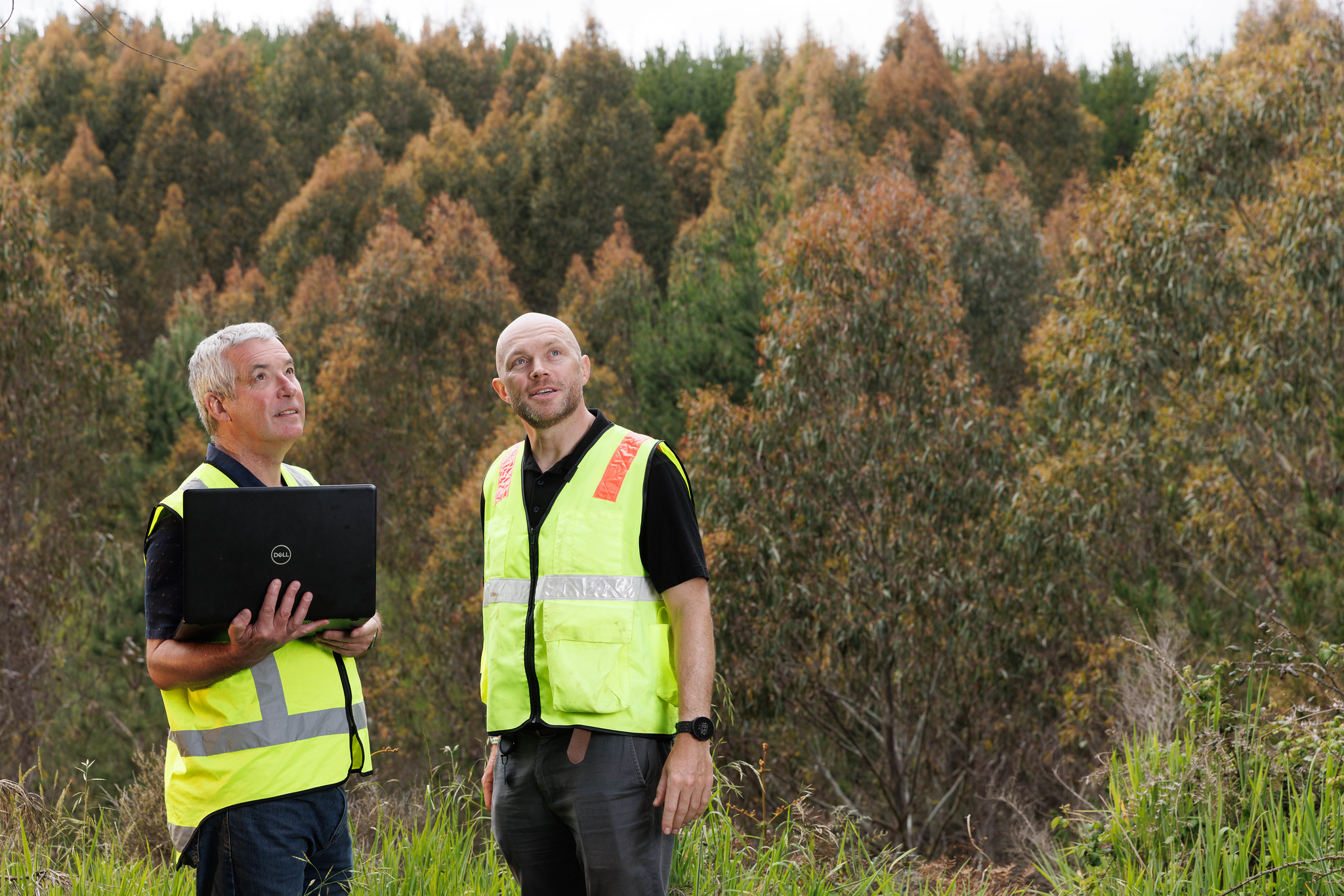Short rotation forestry holds key to lowering fossil fuel dependency
For immediate release
20 May 2024
A two-year research project has shed light on the promising opportunities for regional New Zealand to adopt short rotation forestry (SRF) for bioenergy production.
The findings show that leveraging short rotation forestry will not only diversify regional economies, but also contribute to sustainable land management and generate environmental benefits as New Zealand looks for ways to transition to a circular bioeconomy and meet its net-zero emissions targets by 2050.

Silviculture and forest carbon scientist Alan Jones says Scion’s modelling shows that short rotation forestry as a feedstock for bioenergy has the potential to replace 6% of New Zealand’s annual fossil fuel demand from less than 1% of the land area.
“We’ve built on research from a decade ago and assessed the feasibility of rapidly upscaling bioenergy production from forests. We’ve found there are particular regions well-suited to short rotation forestry which provides a real opportunity for communities to transform their economic base and reshape New Zealand’s energy future.”
A key outcome from Scion’s research is a ‘how to’ guide for short rotation forestry targeting landowners, forest investors, and government agencies. It not only outlines the feasibility of SRF but also identifies specific regions most suitable for it in New Zealand.
Scion’s research recommends that short rotation forestry should be established on lower value land (Land Use Capability Class 5-7) in locations where transport distances to processing locations can be minimised. Regions highlighted include the Central North Island, Northland, the East Coast and Otago.

The ideal species for short rotation forestry is Pinus radiata, owing to its rapid growth rates and high degree of adaptability and disease resistance in a range of growing locations. Other options include Eucalyptus fastigata and Eucalyptus regnans for their potential to rapidly yield large volumes of woody biomass from young age trees. Trees are generally planted in dense stands and managed to intensify rates of wood production for renewable energy, such as wood pellets, torrefied briquettes or liquid biofuels for marine and aviation sectors.
SRF is a forestry practice that involves growing and harvesting trees on a short rotation cycle which, according to Scion’s modelling, would ideally be between 12 and 18 years for the production of wood biomass. This is considerably shorter than the conventional 28-year harvesting cycle.
One of the key advantages of SRF is its ability to provide a steady supply of biomass for energy production on relatively economically marginal land, with plantations harvested multiple times. Additionally, SRF can reduce greenhouse gas emissions by displacing fossil fuels and promoting carbon sequestration in the form of sustainably harvested living trees.
Scion’s research responds to signals from the Climate Change Commission that indicate the rising importance of bioenergy from forests in the coming decade.
It also presents owners of low production grazing land on steeper hill country with alternative options to maximise productive capacity and increase economic viability.
Several challenges could impede the future widespread adoption of SRF in New Zealand – primarily low value of bioenergy feedstock under present market conditions. Considerations such as land costs and transportation distances further complicate the potential adoption of SRF bioenergy nationally. To address these challenges, Scion's analysis proposes integrating the Emissions Trading Scheme (ETS) carbon value of standing trees in SRF plantations into their economic assessment, which provides additional incentives for investment.
Jones says the guide provides a glimpse of what could be possible in the future for short rotation forestry as a vehicle to scale up bioenergy production. But the benefits would go much further if decentralised processing of harvested material was promoted to stimulate regional economies and fast-track bioenergy availability.
“It’s about developing forest systems that are optimised for bioenergy. But in more economically disadvantaged regions, it also makes sense to build and establish processing facilities there because the energy itself is a lot cheaper to transport once it’s chipped and dried, or transformed into liquid biofuels.
To validate theoretical findings, Scion is collaborating with the Ministry for Primary Industries (MPI) on developing designs for forest bioenergy trials. These trials will involve rigorous testing of growth rates, optimal density, and tree health for different species, including Pinus radiata and Eucalyptus varieties. The collaboration represents a critical step in moving from theoretical models to practical implementation, addressing the complexities and uncertainties associated with on-the-ground application.
Scion researchers are also looking at optimising tree genetics and ways to optimise tree genetics by re-evaluating past stock for its compatibility with bioenergy. Conventional tree breeding over the past 50 years has focused on timber quality, minimal branching and straightness. As a feedstock for bioenergy, Jones says optimal trees have very different traits.
“We want high levels of branching, and we don't mind growing bendy stems because we also want high resin production and high wood density. So, some of the traits that would have been conventionally bred out of that breeding stock in the past, we’re looking to bring back in for bioenergy.”
By 2035, one scenario suggests 150,000 hectares of dedicated bioenergy forest could contribute to at least 5% of domestic fossil energy demand, displacing the equivalent of 3 Mt of CO2 emissions from oil combustion per year, or 4 Mt CO2 from coal.
Scion’s research has been funded by the Strategic Science Investment Fund.
ENDS
